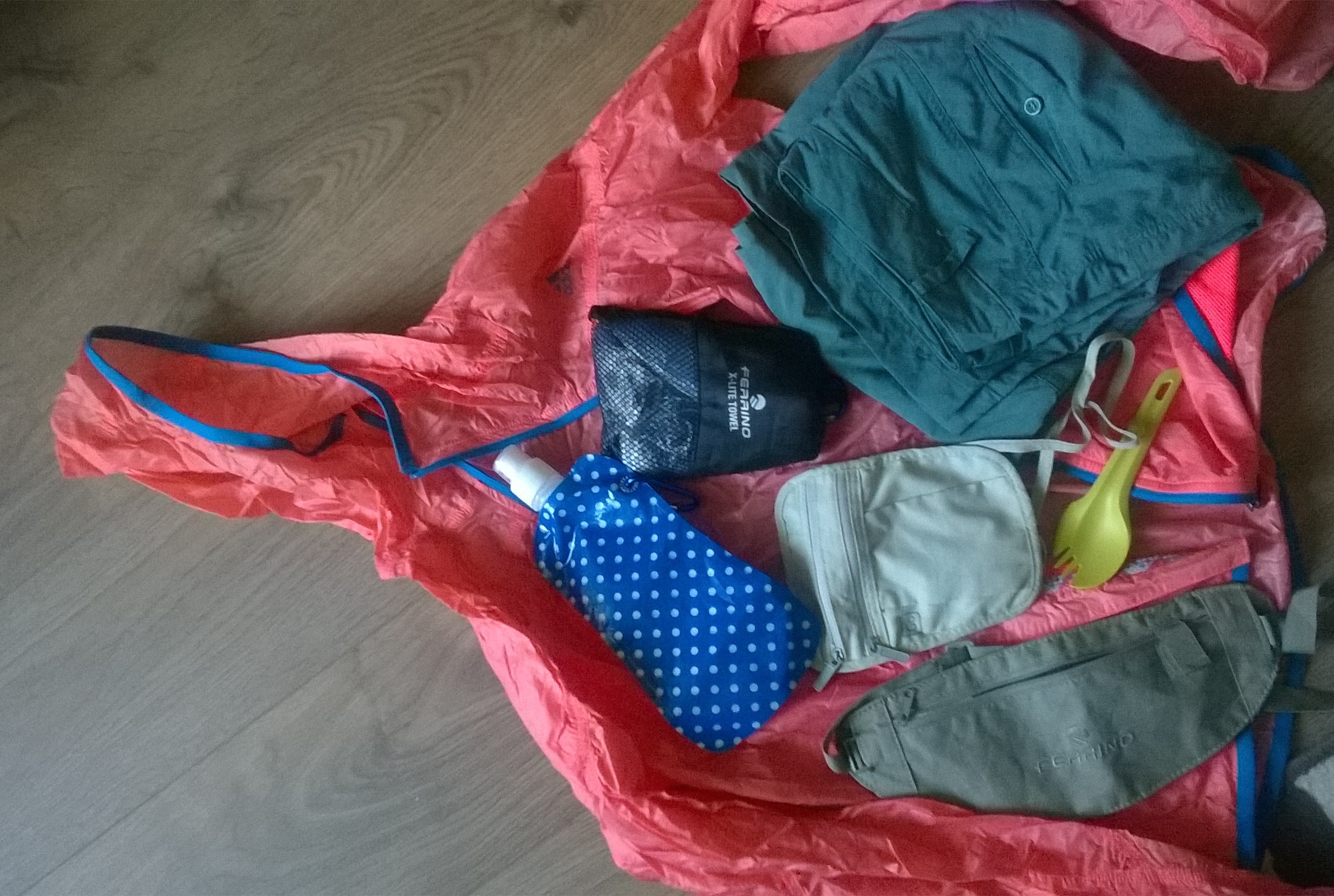Some of my friends are posting and discussing this article about living light and decluttering. It’s an interesting mental exercise to do. I have moved apartments so many times that I can certainly see the benefits of living light. Gradually getting rid of my books is on my agenda.
At the same time, there are certain limitations for traveling/ living light.
The author of the article acknowledges that it makes him buy more expensive things so that he can count on their quality. I was in Thailand for two weeks, for a training and traveling, with six shirts, like the author has. I used three for the training and left them in Bangkok to travel light. It takes 2 days for hand-washed stuff to dry in humid climate. If, moving from place to place, I put a washed shirt in my bag before it dried, it smelled awful afterwards. So no hand-washing a day before traveling. My usual second-hand cotton shirts didn’t survive this routine well, but a super-extra-quick-dry fancy synthetic material Adidas T-shirt, which I bought specifically for this trip, did very well. Conclusion: if I had to do this trip again with two shirts, they would probably have to be expensive brands and very unnatural materials.
I have never done so much shopping before any trip as I did now. It’s because I figured that there will be many challenges, relating to heat, humidity, mosquitoes, risk of theft, and ease of moving around. I can now assess whether it was worth buying the stuff:
- Adidas ClimaLite T-shirt: very useful, dries easily, wrinkle-proof.
- Soft water bottle with a clip from a one-pound shop in Cyprus: served well, given that I was advised to avoid tap water in Thailand and needed water all the time. It was easy to attach to a backpack or a handbag.
- Ferrino money belt, supposedly made from a sweat-proof material: too thin to put several things in it (can only hold a passport and a mobile phone), and insensible to have the belt open with a button – this could be an easy target for pickpockets, so I asked my father to stitch the parts of the belt together.
- Very thin Adidas pants with UV protection: absolutely amazing, dry instantly, easy to hand-wash, wrinkle-proof, look elegant and not like sweatpants at all.
- Wildo spoon-fork-knife utensil from a local military shop (Armijai ir civiliams): was great for scooping coconuts!
- Care Plus roll-on mosquito repellent: quite useful for protecting hands, face and neck from those little suckers, but does not last long and some mosquitoes are still able to discover uncovered parts.
- Deltaco power bank: didn’t need it. Overall, it does not charge my device fully and I still need to find out why.
- Ferrino X-lite microfiber towel: really tiny and should dry quickly, but I didn’t use it as I ended up staying mostly at guesthouses, and towels were always provided.
Of the older things I took from home, I had a small padlock (I read that it’s better to use own padlock at hostels or when renting a bike, but I didn’t need it), and a thin scarf that is large enough to serve as a sheet (a gift from a friend).
Some of my companions also had water-purifying tabs and go-pro to take photos without using timer or asking others.
In the spirit of the article, I would need to think what travel equipment I could get rid of to make space. I am definitely not taking regular towels to travels again, and I will replace some of my cotton clothes with the new purchases. I have stopped taking shampoo with me a few years ago, when I discovered dry shampoo by Lush, which looks like a soap bar and doesn’t count into liquids.
For my next travels I still need something to organize medicines (original packaging is too bulky) and money (regular wallets tend to be unnecessarily large, but small ones for cards are difficult when dealing with multiple currencies, etc.). I could also use a compact large towel that could serve as a bed sheet or substitute a yoga mat, but I never found anything like that.
I noticed that many tourists in Thailand buy these loose pants with a ridiculous elephant pattern. They’re handy when one wears shorts in the city, but needs to cover up before entering a temple or protect themselves from mosquitoes in less urbanized areas after the sun sets.
How else can one declutter while traveling? Using mobile devices and avoiding guidebooks, brochures, etc. is one point. For my companions, photography gear took up a lot of space, but there is not much that can be done about it for people who want to take professional photos. Also, it is often difficult to predict what kind of shoes one would need. In Korea, I found that sneakers were totally useless in summer, as they wouldn’t dry, ever. In Thailand there are many places where one must take shoes off (especially temples), so shoes that need to be tied are inconvenient. Also, in order to take a minimum number of shirts to Thailand, they should all have sleeves, unless you don’t plan on visiting any temples. A scarf wrapped around one’s shoulders when they are wearing a sleeveless shirt is not enough – my friend learned it the hard way.
There are many things that are not an absolute necessity, but make traveling much easier. What is the absolute minimum to take along?


